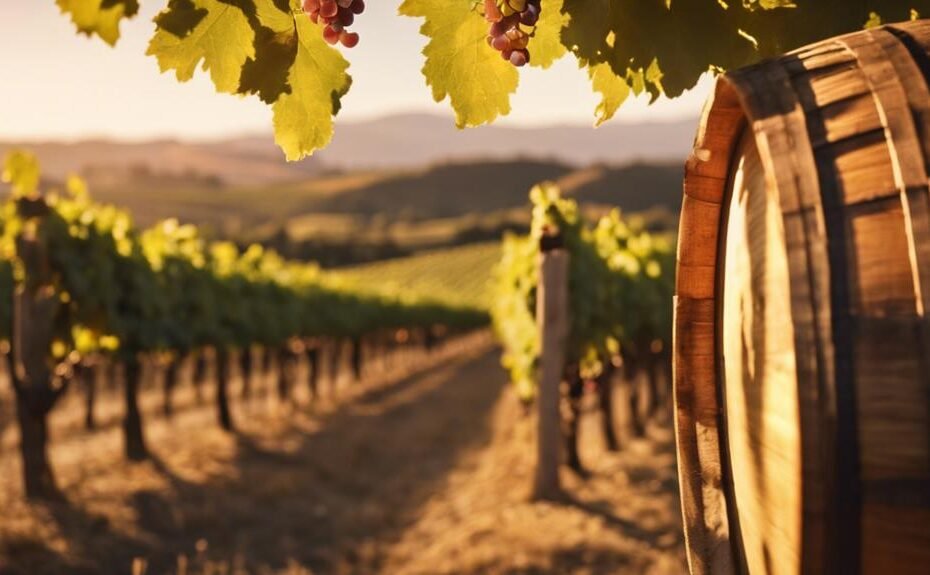Bonarda's rise in Argentina's wine scene is well-deserved. This grape offers fruity flavors like black cherry, blueberry, and plum, along with floral scents such as violets and peonies. It has a medium body, juicy acidity, and low tannins, making it a smooth choice for grilled meats and rich fish dishes.
Unlike Malbec, Bonarda is less tannic and lighter, offering a refreshing alternative. Many think it's the same as Italian Bonarda, but Argentina's Bonarda is actually the Douce Noir grape. This unique profile makes it a favorite for many wine lovers.
Discover why it's gaining so much attention.
Argentina's Bonarda Taste Profile
Argentina's Bonarda boasts a lively taste profile filled with fruity notes like black cherry, blueberry, and plum. The aromas are equally captivating, featuring hints of violets, 5-spice, allspice, and peonies, adding layers of complexity.
This wine's medium body and juicy acidity make it versatile with various foods. Its low tannins allow it to pair well with rich grilled fish like salmon, and meats such as chicken, beef, and pork. The wine's flexibility also extends to South Pacific flavors like pineapple, mango, and teriyaki.
Additionally, it complements sweet and sour dishes, red pepper, and assorted meats, enhancing many culinary experiences.
Comparing Bonarda and Malbec
Bonarda and Malbec are both well-loved Argentine red wines, but they offer different experiences due to their unique characteristics. Bonarda has lower tannins and higher acidity, making it smoother and less astringent than Malbec. This wine also feels lighter and more refreshing, thanks to its juicy acidity.
Malbec, in contrast, has a fuller body and more pronounced tannins, giving it a bolder taste. Both wines are rich in color and share some dark fruit flavors.
However, Bonarda's growing popularity highlights its versatility and unique qualities, making it a rising star in the wine world. As more people try Bonarda, they appreciate its distinct characteristics alongside the already famous Malbec.
Perfect Pairings for Bonarda

When it comes to pairing Bonarda with food, this wine's versatile flavors make it a great match for many dishes. Let's start with Bonarda and BBQ. Its juicy acidity and low tannins make it a perfect companion for grilled meats. Imagine enjoying it with a charred steak or succulent pork ribs. The flavors of the meat and wine enhance each other, creating a memorable meal.
Now, let's talk about seafood and Bonarda. Surprisingly, Bonarda's fruity notes go well with rich, grilled fish like salmon. The wine's smooth finish also pairs nicely with seafood dishes that feature tropical fruits like pineapple or mango.
Whether you're grilling meats or savoring seafood, Bonarda's adaptability ensures a delightful dining experience every time.
Misconceptions About Bonarda
Many people mistakenly believe that Bonarda in Argentina is the same as the grape varieties found in Italy. This confusion arises from the different origins of Bonarda.
In reality, Argentine Bonarda is actually the Douce Noir grape, which is quite different from the Bonarda grapes in Italy. The Italian Bonarda includes a group of six distinct grape varieties, which adds to the mix-up.
Understanding these differences helps in appreciating Bonarda's unique characteristics in Argentina.
While Italian Bonarda varieties can include grapes like Croatina and Uva Rara, the Argentine version stands out with its distinct fruity notes and smoother, less tannic profile.
By clearing up these misconceptions, we can better enjoy and appreciate the unique qualities of Argentine Bonarda.
For example, when you try a bottle of Argentine Bonarda, you can expect flavors of ripe berries and a soft, velvety texture, unlike the more robust and tannic Italian versions.
Key Sources on Bonarda

Three important sources provide a deep understanding of Bonarda:
Kym Anderson's research highlights Bonarda's global appeal and unique traits, showing how this grape has gained worldwide attention.
Ian D'Agata's book on native Italian grapes explores Italian origins, helping us appreciate Bonarda's potential and versatility. He traces its roots back to Italy and explains its transformation in Argentina.
Jancis Robinson's guide to vine varieties offers insights into Bonarda's adaptability and the nuances of its flavors.
Together, these sources form a solid foundation for anyone interested in understanding Bonarda's rise as Argentina's red wine star.
Conclusion
Bonarda is an underrated gem in Argentina's wine world. Did you know it makes up nearly 18% of the country's red wine production? This shows how important Bonarda is becoming.
It has fruity flavors, lower tannins, and high acidity, making it versatile and food-friendly. For example, Bonarda pairs well with pizza, grilled meats, and pasta.
It's time to appreciate Bonarda. Let's try something new and exciting!
